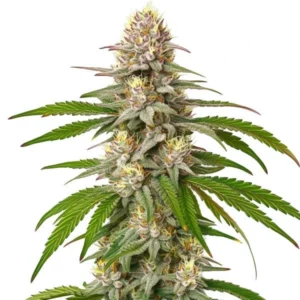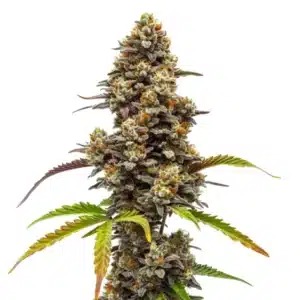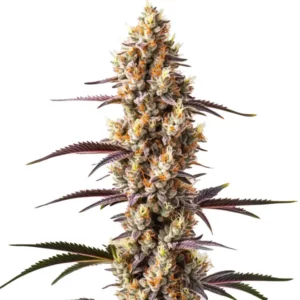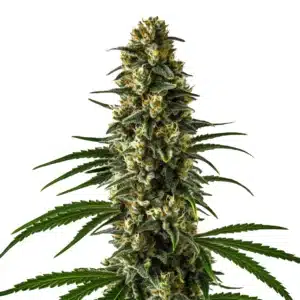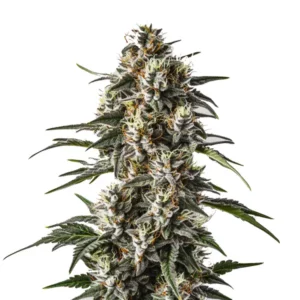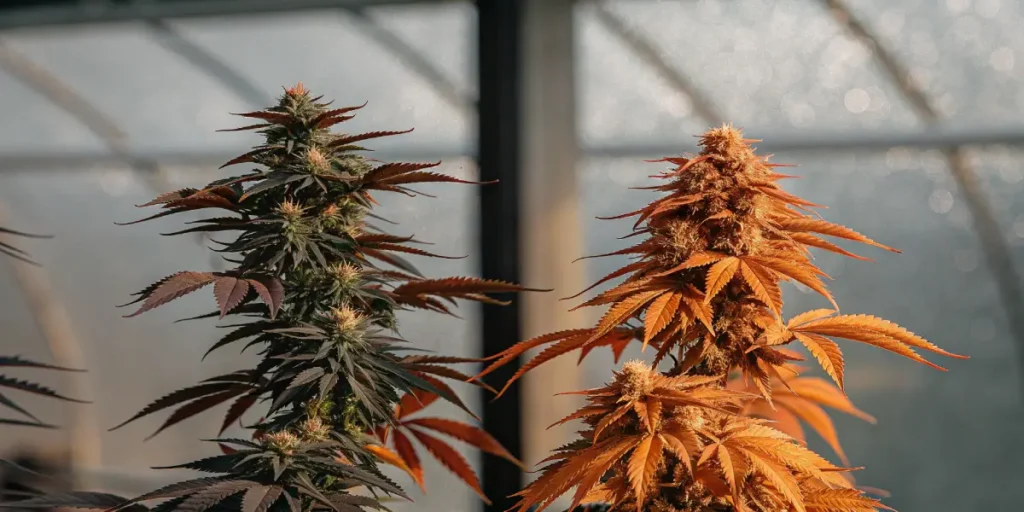
How Genetics Affect Cannabis Apical Dominance
Apical dominance in cannabis is a fascinating subject, especially for those who are venturing into growing cannabis for the first time or for seasoned growers looking to understand their plants better. This concept refers to the tendency of the main, central stem of the cannabis plant to grow more vigorously than its side branches, thanks to the plant’s natural hormonal signals. But how genetics affect cannabis apical dominance is where things get truly interesting.
Genetics play a crucial role in determining how a cannabis plant expresses apical dominance. Some strains naturally exhibit stronger apical dominance due to their genetic makeup. These genetic traits affecting apical dominance in cannabis can dictate the plant’s structure, influencing how it grows and how it should be pruned to maximize yields.
Recommended Strains
Blue Dream
|
|
THC | 17% - 24% (Medium) |
|
|
Type | Feminized |
|
|
Yield | High |
|
|
Phenotype | 50% Indica / 50% Sativa |
Pineapple Express
|
|
THC | 18% - 22% (Medium) |
|
|
Type | Feminized |
|
|
Yield | Medium |
|
|
Phenotype | 40% Indica / 60% Sativa |
For instance, the popular strain Blue Dream from Blimburn Seeds is known for its balanced growth pattern. The genetic influence on cannabis apical dominance in this strain ensures a healthy top cola while allowing sufficient growth of side branches. This makes it a favorite among growers who prefer a more even canopy without extensive training.
Genetic Influence on Cannabis Apical Dominance
When discussing how genetics control cannabis plant apical dominance, it’s vital to note the role of plant hormones, mainly auxins. These hormones are produced at the tip of the plant and suppress the growth of lateral buds, promoting a dominant central stem. Different cannabis strains produce varying levels of auxins, which directly impacts their growth patterns.
Some strains are genetically predisposed to weak apical dominance, allowing for a bushier plant with more lateral growth. For example, strains like Pineapple Express from Blimburn Seeds may require less intervention to achieve a multi-cola structure. These traits are beneficial for growers aiming for a sea of green setup.
Another aspect of how genetics affect cannabis apical dominance is the environmental adaptability of different strains. Strains bred in diverse climates may exhibit varying levels of apical dominance to cope with their surroundings. This adaptability can be leveraged by growers to fine-tune their cultivation practices for optimal growth.
Knowing the genetic influence on cannabis apical dominance can also aid in breeding programs. By selecting parent plants with desired levels of apical dominance, breeders can create new strains that offer specific growth characteristics, enhancing both yield and quality. This targeted approach underscores the importance of genetics in cannabis cultivation.
Practical Examples of Cannabis Growth Genetics and Apical Dominance
The strain Critical Mass from Blimburn Seeds demonstrates strong apical dominance due to its genetic makeup. This trait can be advantageous for growers looking to produce a single large cola, which is particularly desirable in certain markets. However, it requires specific pruning techniques to optimize yield.
Growers often use techniques like topping and fimming to manage apical dominance. These methods involve cutting the main stem to encourage lateral growth. However, the effectiveness of these techniques can vary significantly between strains due to their genetic predispositions.
Examining cannabis growth genetics and apical dominance in different strains reveals a spectrum of growth habits. Strains like Sour Diesel may show moderate apical dominance, providing a balanced approach to canopy management. Knowing these habits helps growers choose the right training techniques for their specific needs.
Another example is the strain Amnesia Haze, which showcases how genetics affect cannabis apical dominance by balancing vigorous central growth with the potential for lateral expansion. This dual capability can be harnessed for both traditional and advanced cultivation methods, making it a versatile choice for growers.
Promos & Deals
Apical Dominance in Cannabis Genetic Factors
Indica and sativa strains often exhibit different levels of apical dominance due to their distinct genetic backgrounds. Indicas typically have a more compact structure with less pronounced apical dominance, while sativas are known for their tall, spindly growth with a clear central leader.
Hybrid strains, which combine characteristics of both indicas and sativas, offer a unique opportunity to observe the interplay of genetic factors in apical dominance. A strain like Girl Scout Cookies from Blimburn Seeds, for example, may exhibit a balanced growth pattern, benefiting from both genetic pools.
How genetics affect cannabis apical dominance is further demonstrated in the diversity of hybrid strains. These strains can inherit traits from both parents, leading to a variety of growth patterns that can be optimized for specific cultivation environments. This flexibility is particularly beneficial for growers seeking to maximize their harvest.
In some cases, the apical dominance in cannabis genetic factors can be enhanced or suppressed through careful selection and breeding. By choosing plants with desirable traits, growers can influence future generations, leading to more predictable growth outcomes and improved quality of the final product.
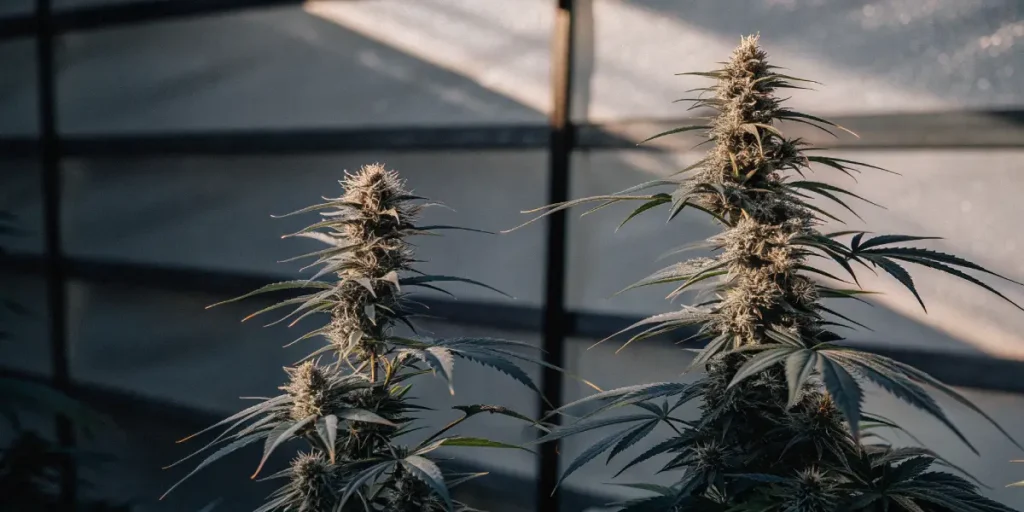
Managing Genetic Traits Affecting Apical Dominance in Cannabis
Knoweing the genetic background of your chosen cannabis strain can guide your cultivation practices. For a strain with strong apical dominance, implementing low-stress training (LST) can help distribute growth hormones more evenly across the plant, encouraging a bushier structure.
On the other hand, strains with weaker apical dominance might benefit from high-stress training (HST) techniques, such as super cropping, to strengthen the central stem and improve overall yield. The choice of technique is largely influenced by the genetic traits of the strain.
Regular assessment of how genetics affect cannabis apical dominance in your plants can lead to more efficient cultivation strategies. By observing the responses to different training techniques, growers can adjust their methods to better suit the genetic predispositions of their strains, enhancing overall growth and yield.
Moreover, knowing genetic traits affecting apical dominance in cannabis can aid in predicting how a plant will respond to environmental changes. This knowledge allows growers to preemptively modify their cultivation practices, ensuring that their plants thrive under varying conditions.
FAQs
What is apical dominance in cannabis?
Apical dominance is a growth pattern where the main stem of the cannabis plant grows more vigorously than the side branches. This occurs due to hormones produced at the plant’s tip, which suppress lateral growth. Knowing how genetics affect cannabis apical dominance helps growers decide on training techniques to optimize their plant’s structure.
In some strains, strong apical dominance can lead to a tall, single-stemmed plant, while others may naturally branch out. Recognizing these patterns can aid in choosing whether to top or train your plants to achieve desired growth outcomes.
By knowing how genetics control cannabis plant apical dominance, growers can make informed decisions about their cultivation approach. This knowledge is essential for achieving a harmonious balance between vertical and lateral growth, which is crucial for indoor and outdoor setups alike.
Furthermore, recognizing the genetic predispositions of each strain allows growers to experiment with different techniques, enhancing their knowing of the plant’s biology and improving their ability to produce high-quality cannabis.
How do genetics influence apical dominance in cannabis?
Genetic influence on cannabis apical dominance is significant. Different strains produce varying levels of growth hormones, impacting how dominant the central stem becomes. These genetic factors can dictate the plant’s overall shape and how it should be pruned.
For instance, some strains bred for high yields may exhibit stronger apical dominance to support a larger central cola. Knowing these genetic traits allows growers to tailor their cultivation practices to suit the specific needs of each strain.
Analyzing genetic influence on cannabis apical dominance also highlights the importance of strain selection. By choosing strains with known growth patterns, growers can better plan their cultivation strategies, ensuring that they meet both their space and production requirements.
Additionally, this knowing can be advantageous in breeding programs, where specific traits can be passed on to future generations, creating strains with desirable characteristics that cater to specific market demands.
Can you modify apical dominance in cannabis plants?
Yes, growers can modify apical dominance using various training techniques. Topping and fimming are common methods to encourage lateral growth and create a bushier plant. These techniques work by disrupting the hormone flow from the plant’s tip, which in turn promotes side branch development.
Additionally, low-stress training (LST) and high-stress training (HST) can be used to manipulate plant structure. However, the success of these methods largely depends on the genetic predisposition of the strain in question.
Knowing how genetics affect cannabis apical dominance allows growers to select the most appropriate training method for their specific strains. This customization can lead to improved plant health and increased yields, making it a crucial aspect of successful cannabis cultivation.
Moreover, these techniques can be adjusted based on the plant’s growth stage and environmental conditions, offering a dynamic approach to managing cannabis growth genetics and apical dominance.
Why is knowing apical dominance important for cannabis growers?
Knowing how genetics affect cannabis apical dominance is crucial for optimizing plant growth and yield. By understanding the natural growth patterns of different strains, growers can implement the most effective training techniques to enhance their plants’ performance.
This knowledge helps in planning the cultivation space, managing plant height, and increasing light exposure to lower branches, ultimately leading to more uniform and abundant yields.
Furthermore, knowing apical dominance in cannabis genetic factors enables growers to troubleshoot growth issues more effectively. By pinpointing the genetic cause of certain growth patterns, they can adjust their methods to overcome potential obstacles.
This insight also empowers growers to experiment with new techniques and cultivation methods, fostering innovation and continuous improvement in the field of cannabis cultivation.
What are some strains with unique apical dominance traits?
Strains like Blue Dream, Critical Mass, and Girl Scout Cookies from blimburnseeds.com exhibit distinct apical dominance characteristics. Blue Dream offers balanced growth, making it suitable for various training methods. Critical Mass demonstrates strong apical dominance, ideal for a single large cola structure.
Girl Scout Cookies, as a hybrid, presents a mix of traits from its indica and sativa lineage, providing growers with flexibility in training approaches. Selecting the right strain based on its genetic traits can simplify management and maximize yield potential.
Exploring the range of cannabis growth genetics and apical dominance across different strains can lead to surprising discoveries. Strains like White Widow, known for its robust growth, provide a clear example of how genetics affect cannabis apical dominance, offering a reliable option for both novice and experienced growers.
Similarly, the strain Northern Lights showcases a unique blend of genetic traits affecting apical dominance in cannabis, making it an excellent choice for those looking to experiment with various training techniques to optimize growth and yield.



